
The Narwhal’s in-depth environmental reporting earns 11 national award nominations
From disappearing ice roads to reappearing buffalo, our stories explained the wonder and challenges of...
In a balcony at the Ontario legislature, overlooking rows of lawmakers sparring over mining in the Far North, Chris Moonias rose to his feet.
The Chief-elect of Neskantaga First Nation was seated with representatives of four other nations from the Far North: Kitchenuhmaykoosib Inninuwug, Muskrat Dam, Grassy Narrows and Wapekeka, all located over 1,000 kilometres away from Toronto. They were there Wednesday to warn the government that they stood united to push back against the province’s efforts to expand mining in their territories — particularly in the Ring of Fire region. In another balcony across the room, dozens more members of the nations looked on.
Moments earlier, amid question period, NDP MPP Sol Mamakwa had asked Premier Doug Ford if he would meet with the chiefs seated above to hear their concerns, a sit-down they said they’d been seeking for weeks. Ford didn’t answer, deferring to another minister instead.
And so Chris Moonias stood, pointing his finger at the premier below, his voice echoing through the chamber.
“No consent, no Ring of Fire,” he said. “Doug Ford, come and meet me.”
Some ministers looked up, but not the premier. Ford stared straight ahead as more voices chimed in, some chanting “no Ring of Fire.”
“Our people’s lives are important,” said Wayne Moonias, Neskantaga’s outgoing Chief, as security ejected him and Chris Moonias from the room.
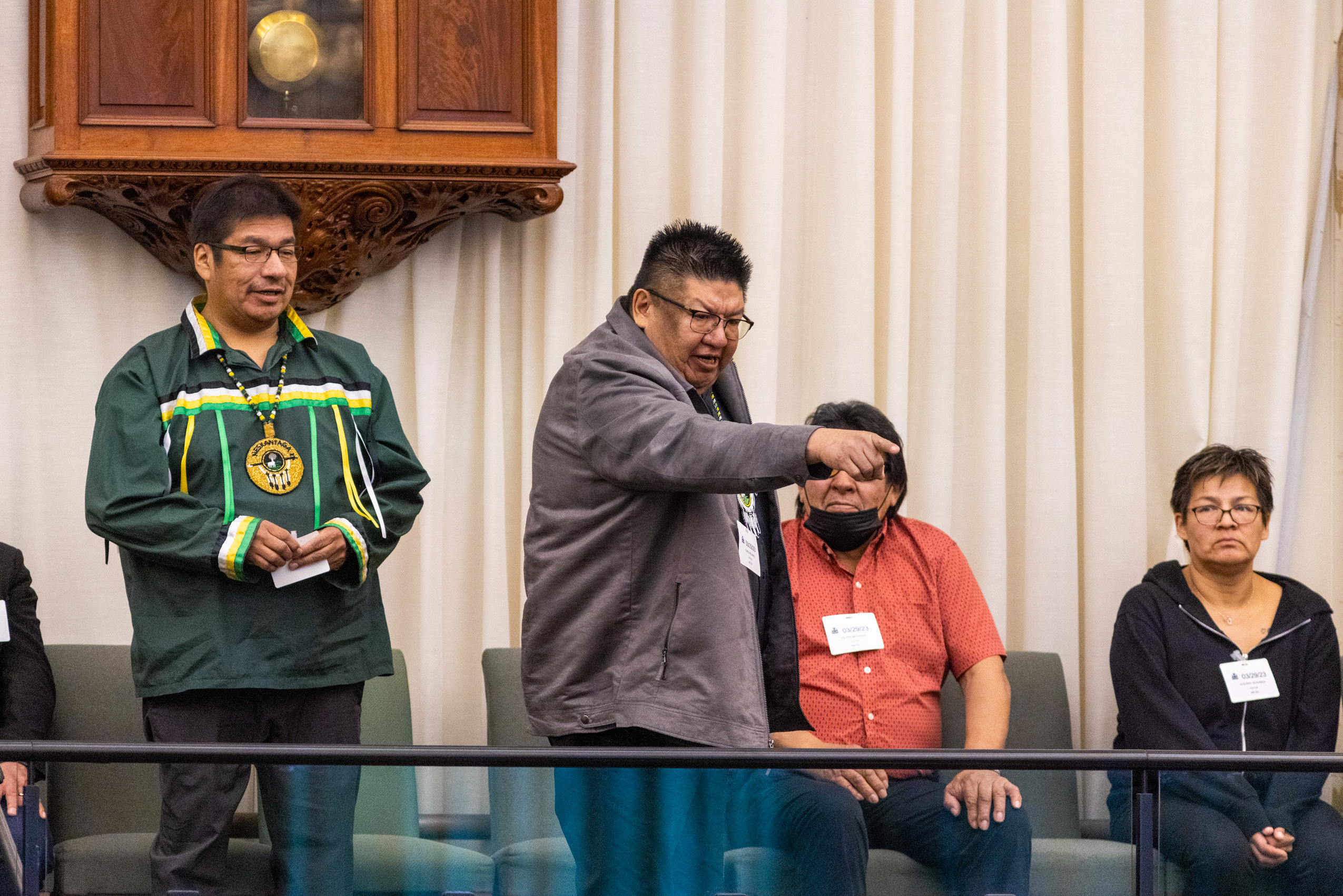
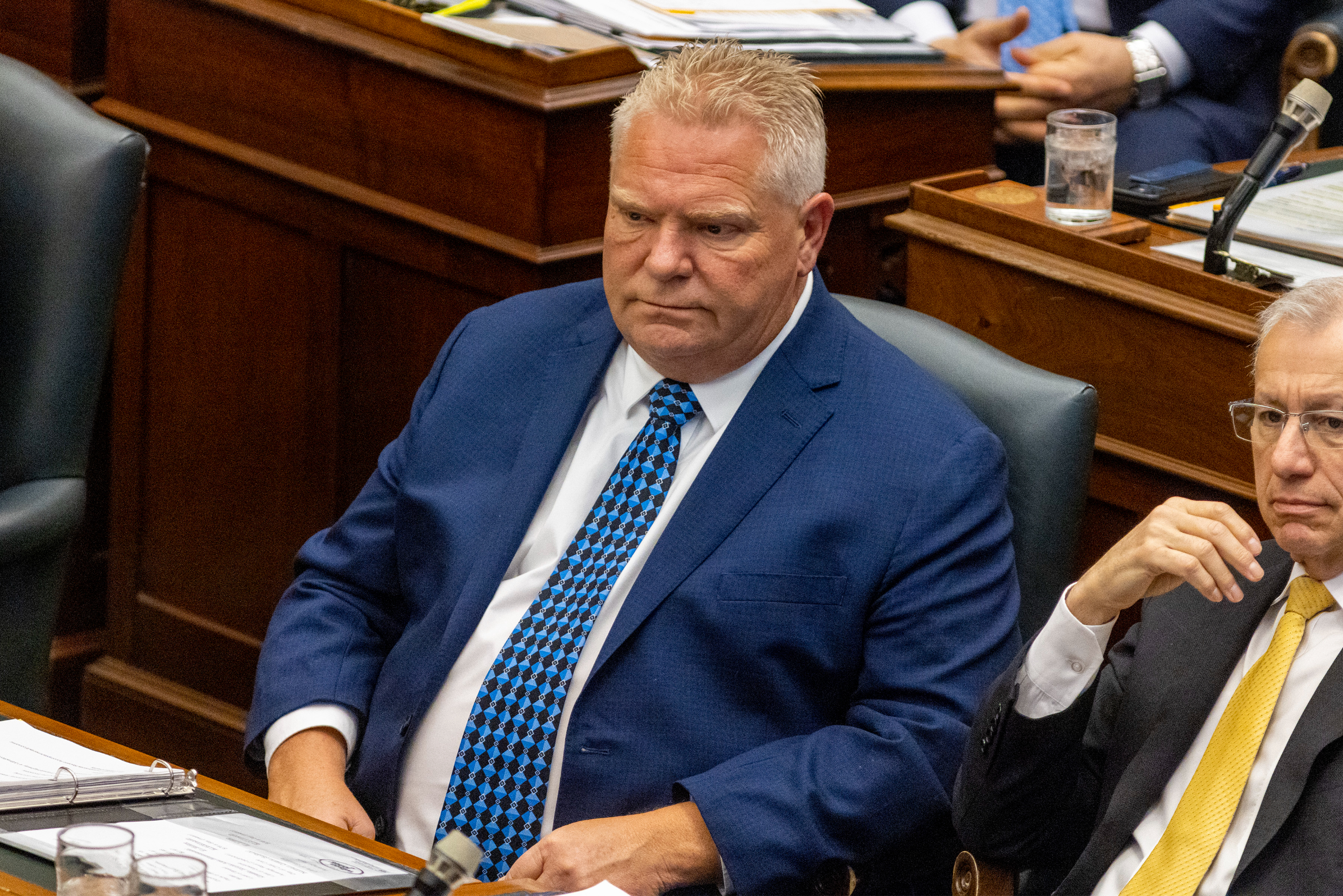
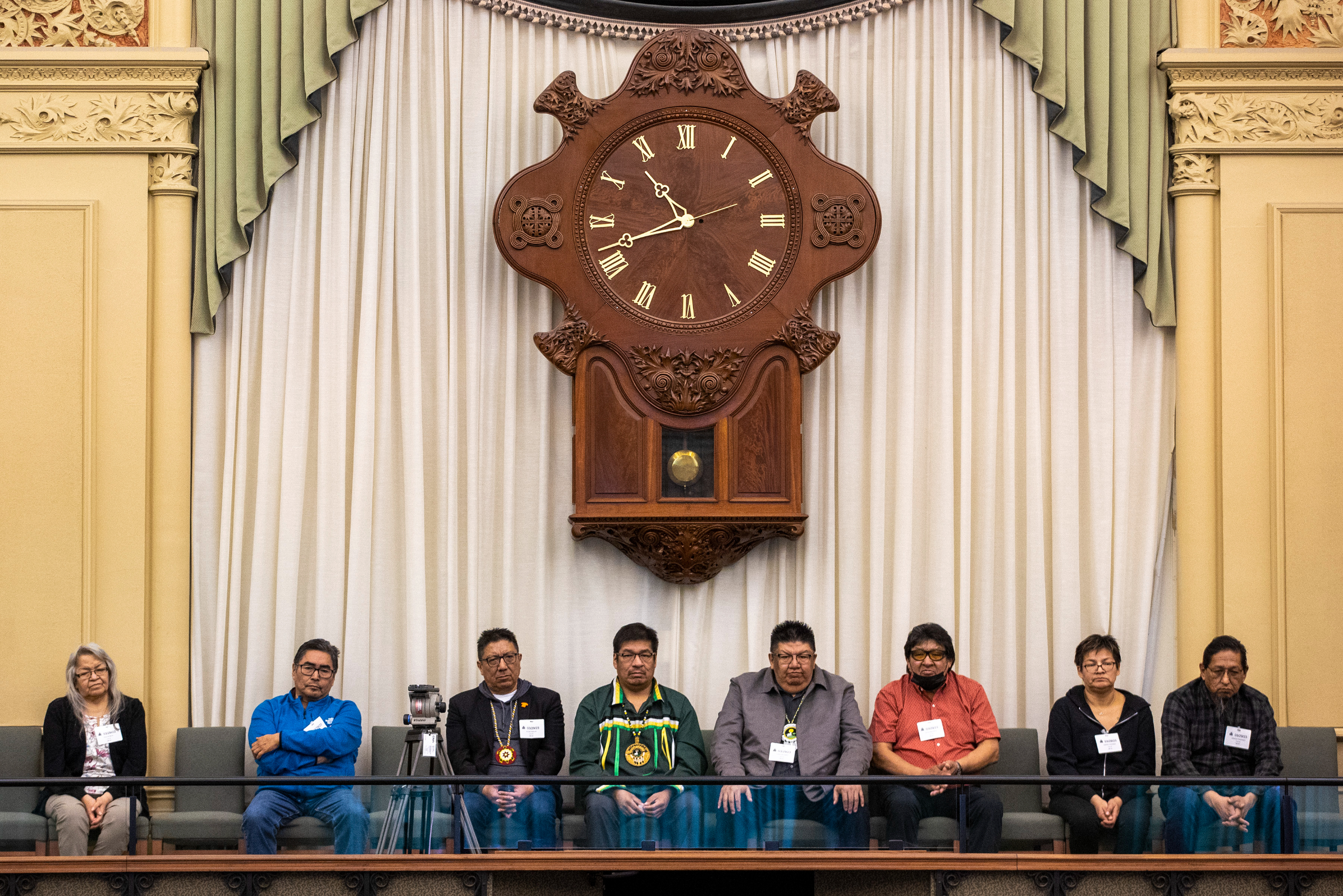
Neskantaga, Kitchenuhmaykoosib Inninuwug, Muskrat Dam, Grassy Narrows and Wapekeka are among a group of nations that formed the First Nations Land Defence Alliance earlier this year in an effort to defend against resource extraction in their territories. They came together as governments across Canada are pushing to open more mines faster, an effort to secure supplies of minerals needed to build lower-emissions technology like electric vehicles. But with that push has come renewed concerns from First Nations, many of which have said nothing should be happening on their territories without their free, prior and informed consent.
In Ontario, the provincial government has been laser-focused on the remote and environmentally-sensitive Ring of Fire region in the James Bay Lowlands. Right now, there are no permanent roads to the area. But miners have been asking governments to approve and build them for over a decade so they can access mineral deposits in the area.
Almost everyone agrees that roads would upend life for First Nations in the Ring of Fire region, but different leaders and individuals within each community have varying views on what should happen and whether governments and industry have gone about it the right way.
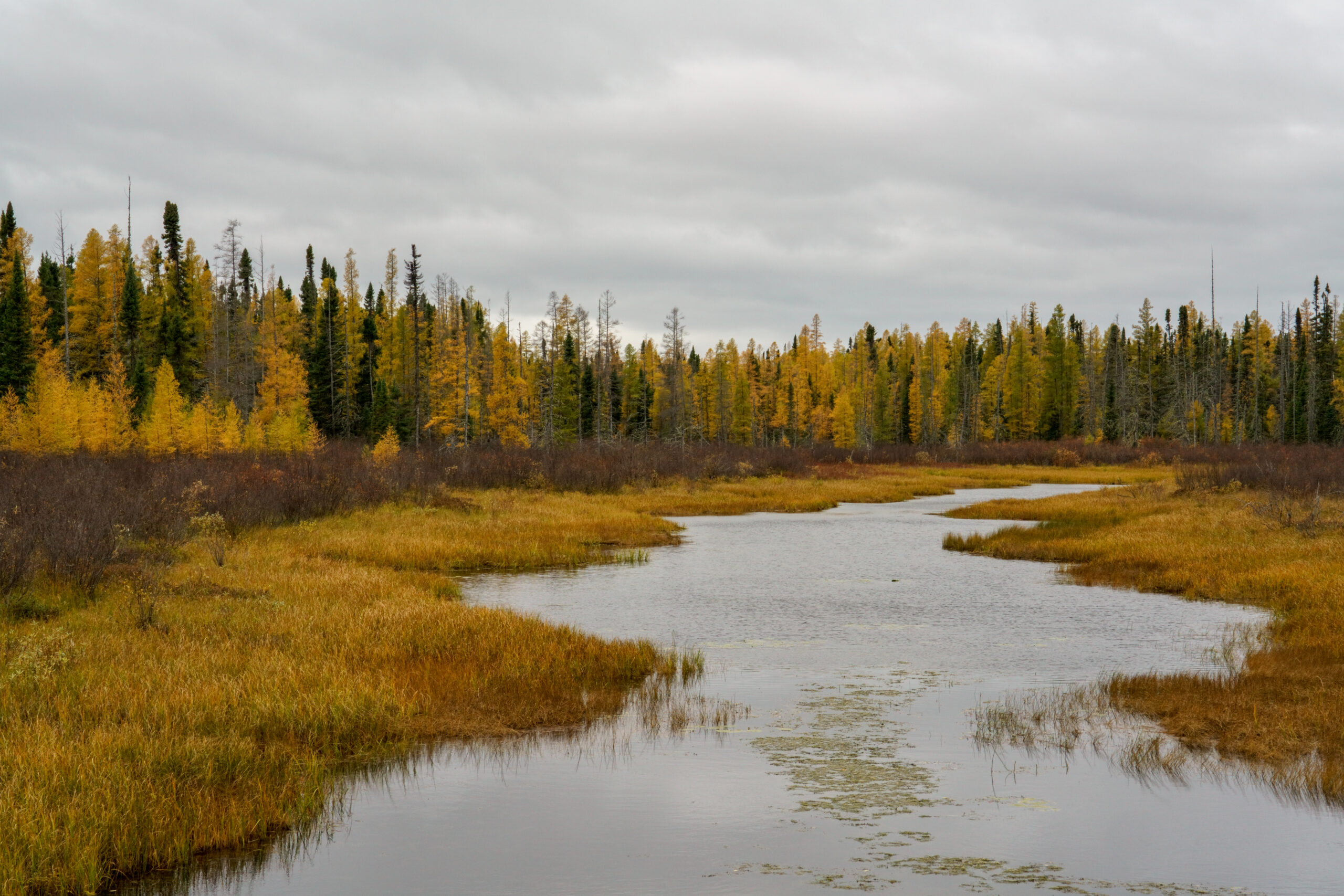
The Ontario government is backing access road projects proposed by Webequie and Marten Falls First Nations, which would connect their communities to services and opportunities to the south, and also provide new access for mining companies.
Other nations, like Neskantaga, haven’t consented to development and say the Ontario government isn’t meaningfully consulting them about processes that will shape their future for generations to come. Neskantaga says the nation — which is also handling crises with youth suicides and long-term boil-water advisories caused by the ongoing impacts of colonization — needs more than government emails and updates. Its members need time and resources to truly absorb the various proposals and options. They also need consultations to be held in the community and in Anishinaabemowin, the language spoken by many who live there.
Neskantaga isn’t necessarily opposed to development altogether, but the nation needs to properly understand what the impacts to the environment and its way of life would be before the community can even consider giving consent, Chris Moonias said.
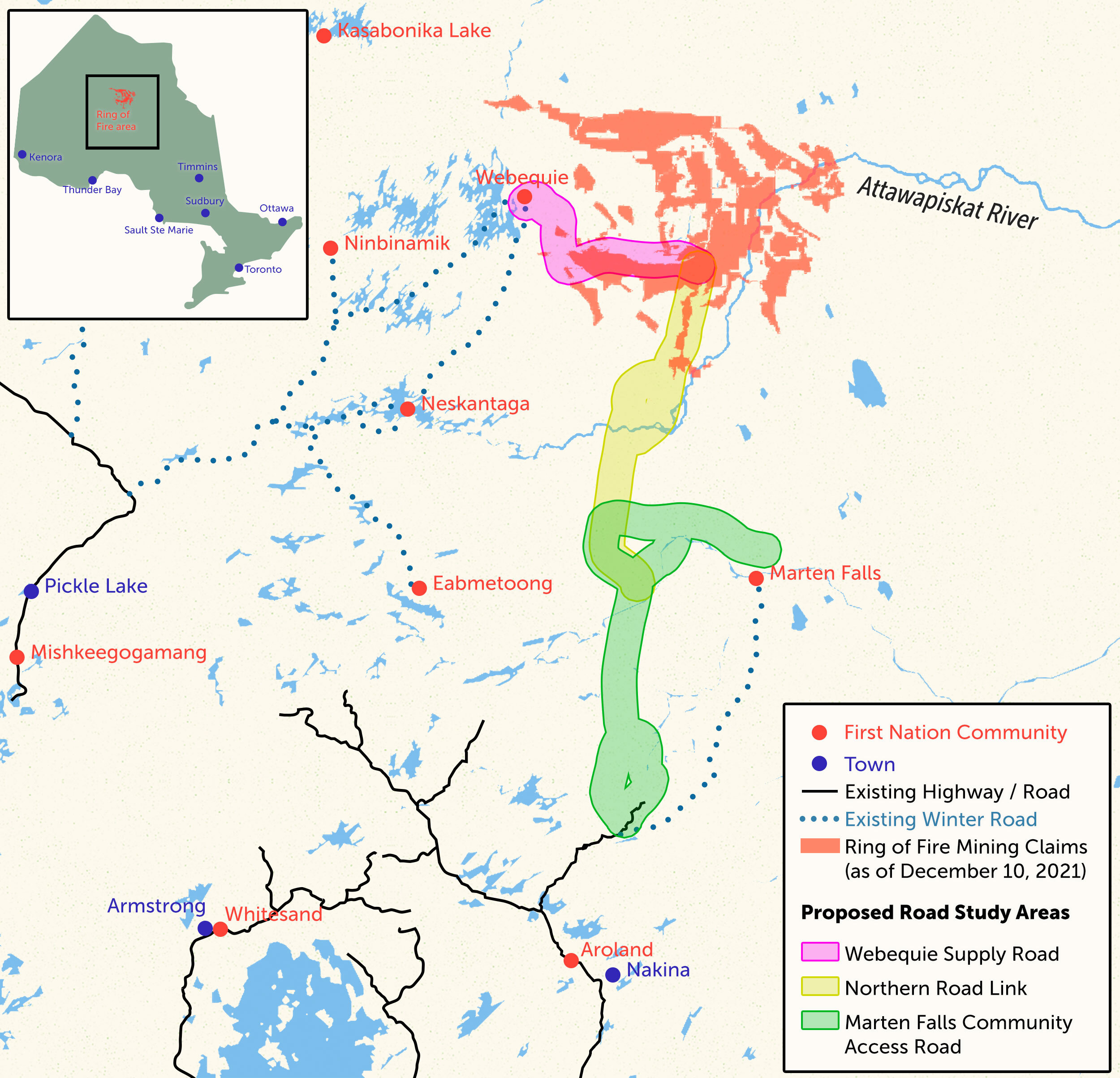
Neskantaga is located along the Attawapiskat River, which a proposed road would cross. Chris Moonias said Ford hasn’t responded to invitations to meet with the First Nation’s leadership to talk about their concerns, although Caitlin Clark, a spokesperson for Ford, said the premier’s office wasn’t aware of a formal invitation.
“He wants to destroy my territory, he should come and talk to me,” Chris Moonias said of Ford.
The Ontario government has said the Ring of Fire is a massive economic opportunity, and its hope is simply to leverage it. Responding to Mamakwa’s questions in the legislature Wednesday, Indigenous Affairs Minister Greg Rickford said the province wants to share that opportunity with First Nations.
“We meet very regularly with Indigenous leaders from across this province,” Rickford said. “Those meetings are focused on building consensus. They’re about ensuring that resources extracted from northern Ontario are distributed fairly and most importantly, under the resource revenue sharing agreements, to ensure that Indigenous communities are involved in the benefits of those kinds of resource activities.”
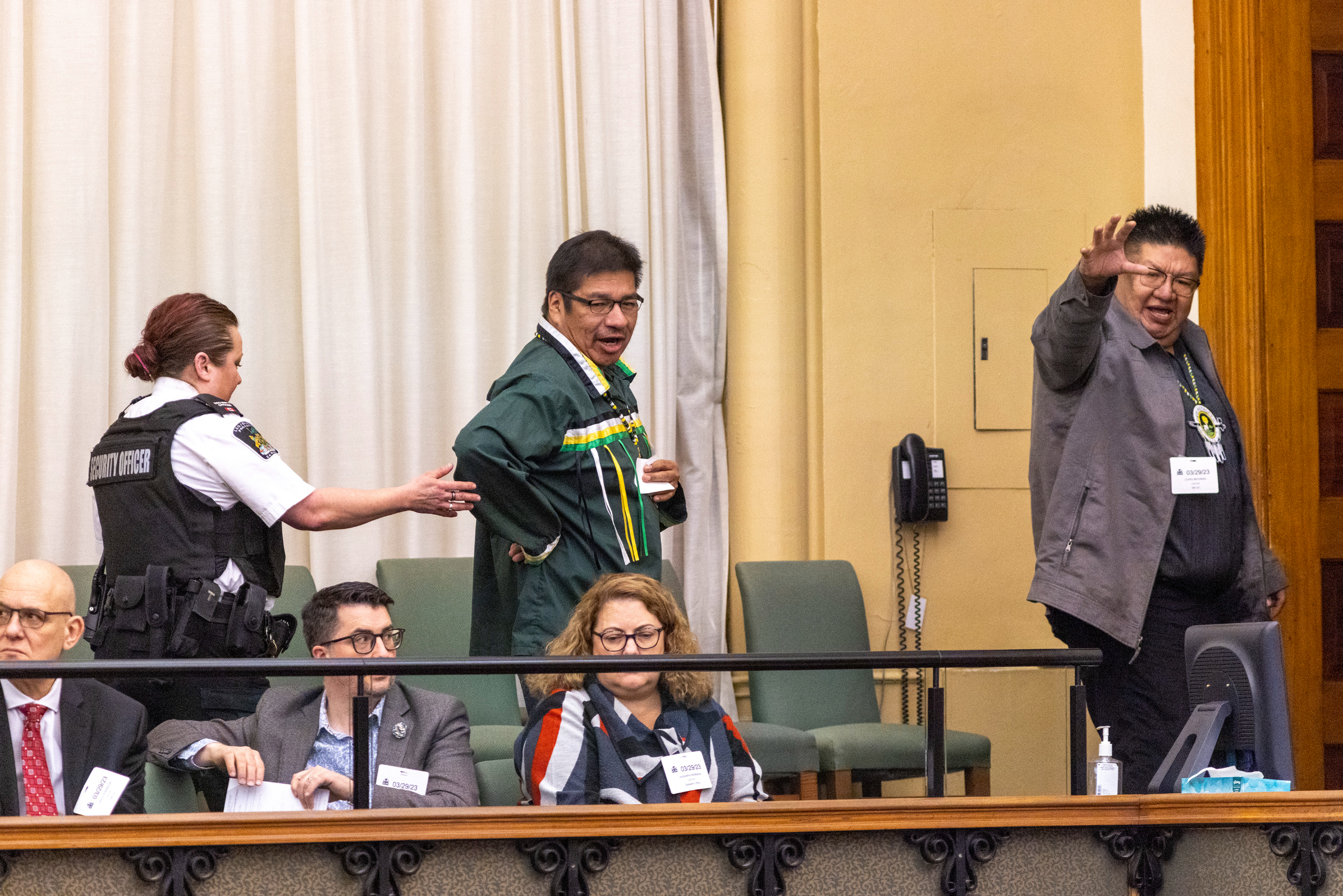
At a press conference earlier in the day, Moonias had warned that Neskantaga would be willing to defend its homeland if mining companies or the government attempted to build across the Attawapiskat River. “Whatever is being done to us, we’re going to match it,” the incoming Chief said.
After their ejection from the legislative chamber, Chris and Wayne Moonias stood in the hallway, surrounded by the other representatives and dozens of members of their First Nations. At the centre stood Bedahbun Moonias, a young member of Neskantaga First Nation, with a message for the premier.
“This is to Doug Ford,” she said with tears running down her cheeks. “Think about us. Think about our next generation. What if we lose our culture? What if we lose our land? I don’t want to lose our land.”
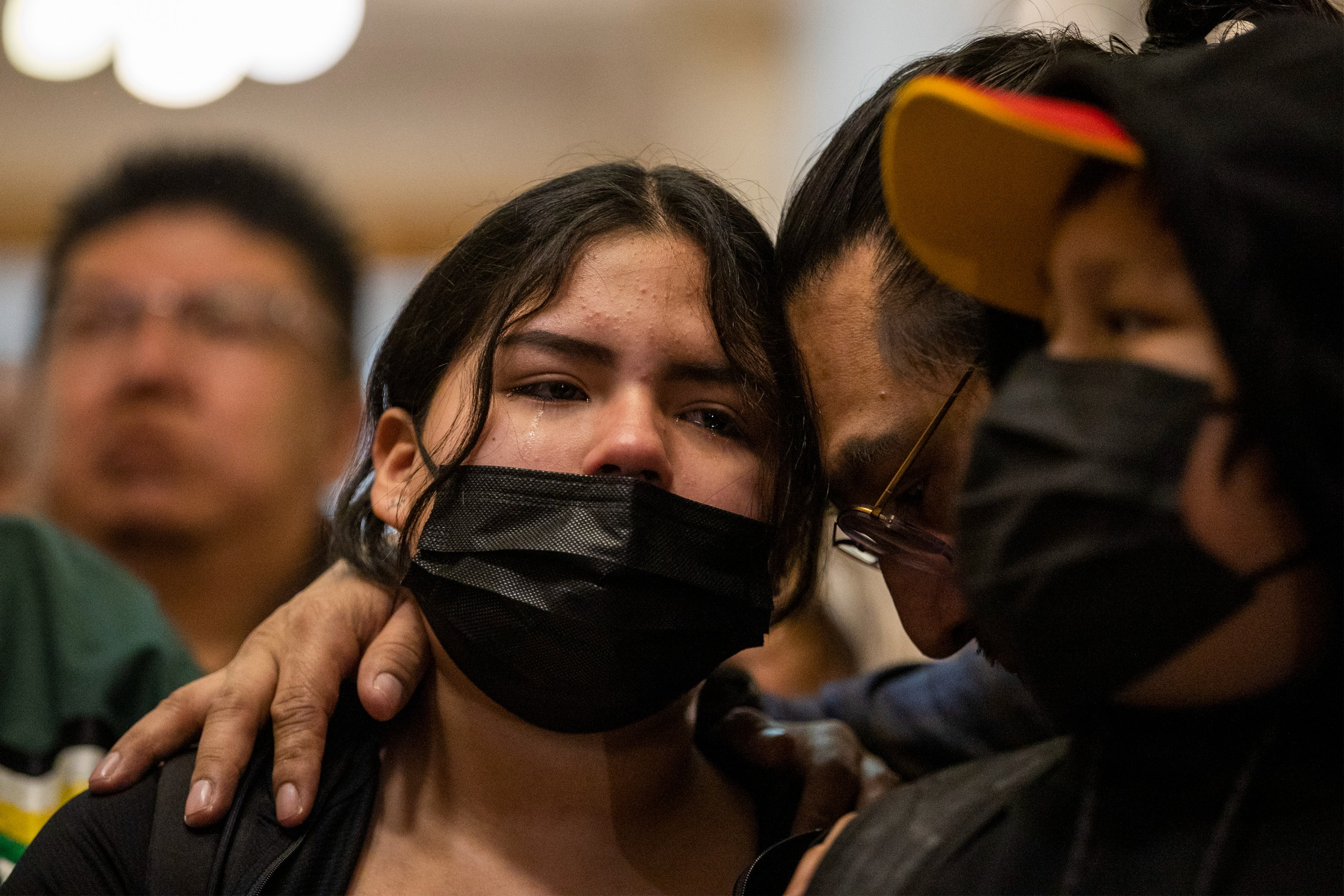
The Ring of Fire wasn’t the only mining issue the nations who travelled to Queen’s Park were concerned about. Earlier this year, the Ford government proposed a series of changes to Ontario’s Mining Act, aimed at helping companies open new mines faster. And amid Canada’s current mineral boom, there’s been a surge of fresh mining claims on Grassy Narrows First Nation’s territory, north of Kenora, Ont. The Ontario government allows companies to stake mining claims — which grant them the right to explore a parcel of land for minerals — online without ever seeing the area in person, or consulting First Nations whose territory they’re on.
Grassy Narrows Chief Rudy Turtle said he was at Queen’s Park on Wednesday to remind the government that his nation has been very clear on where it stands when it comes to resource extraction in their territory. About 20 years ago, he noted, Grassy Narrows began a logging blockade that continues to this day.
“We don’t want mining, we don’t want development,” he said. “We want to keep our land as it is and keep it healthy, so that our young people, generations to come, can use the land the way we always used it, the way our ancestors used it.”
Kitchenuhmaykoosib Inninuwug, located far north of Thunder Bay, has also fought back against development before. Cecilia Begg, an elected councillor who represented the First Nation at Queen’s Park Wednesday, was arrested in 2008 after blockading a mining company. Speaking to reporters, she said it’s possible her community could consent to development in the future, but only if consultation is done the right way, with First Nations, industry and Canadian governments in agreement about the project, process and impacts.
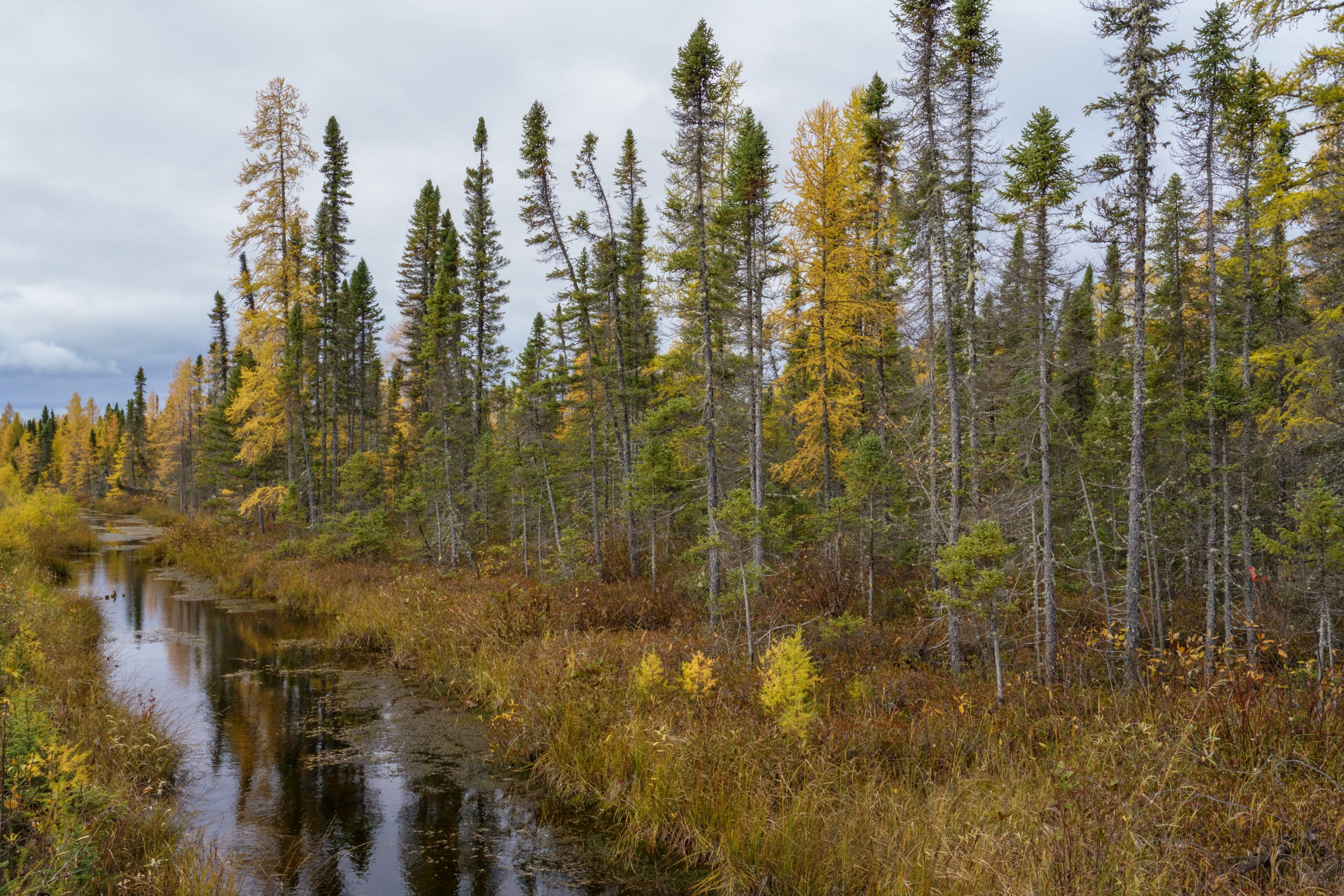
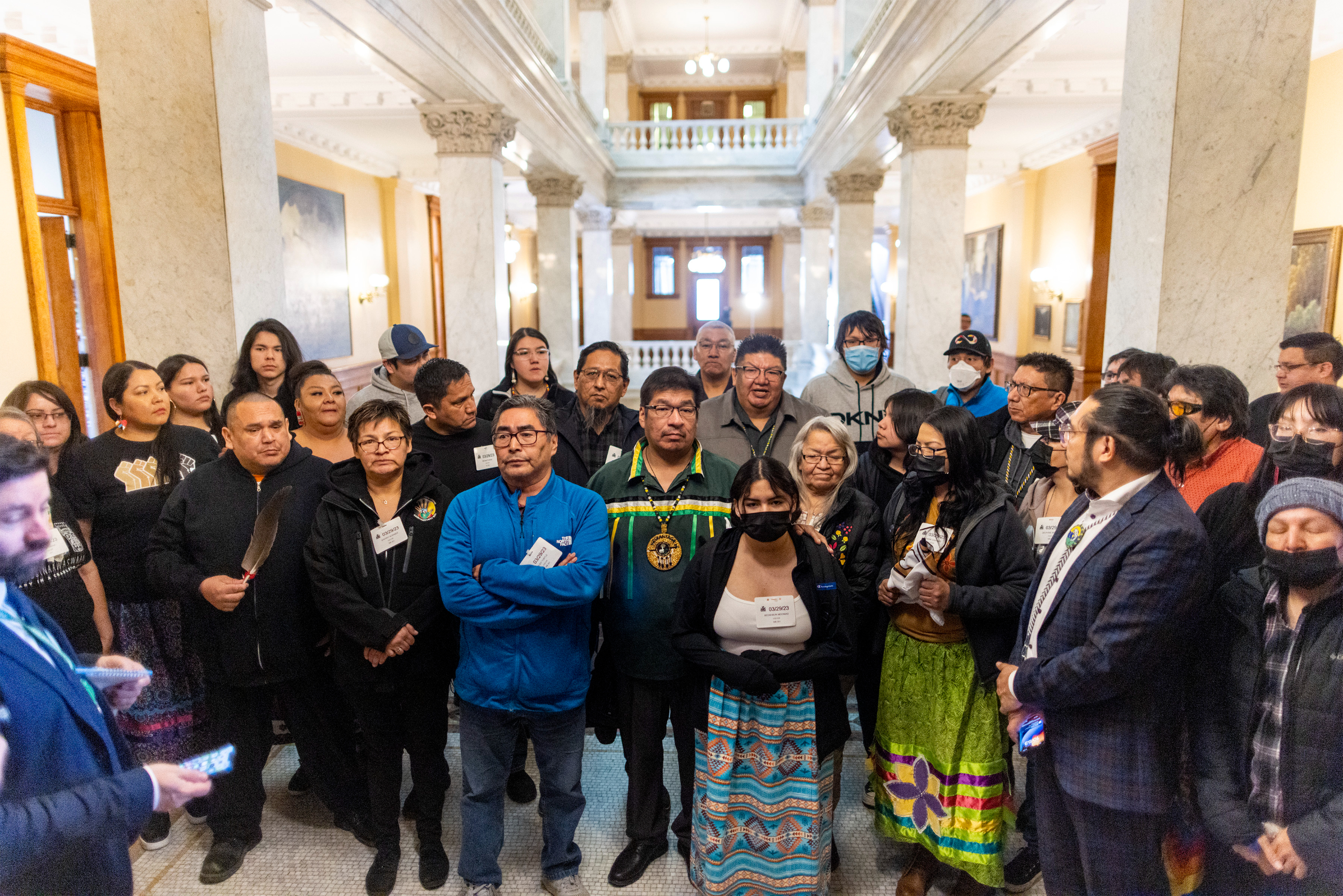
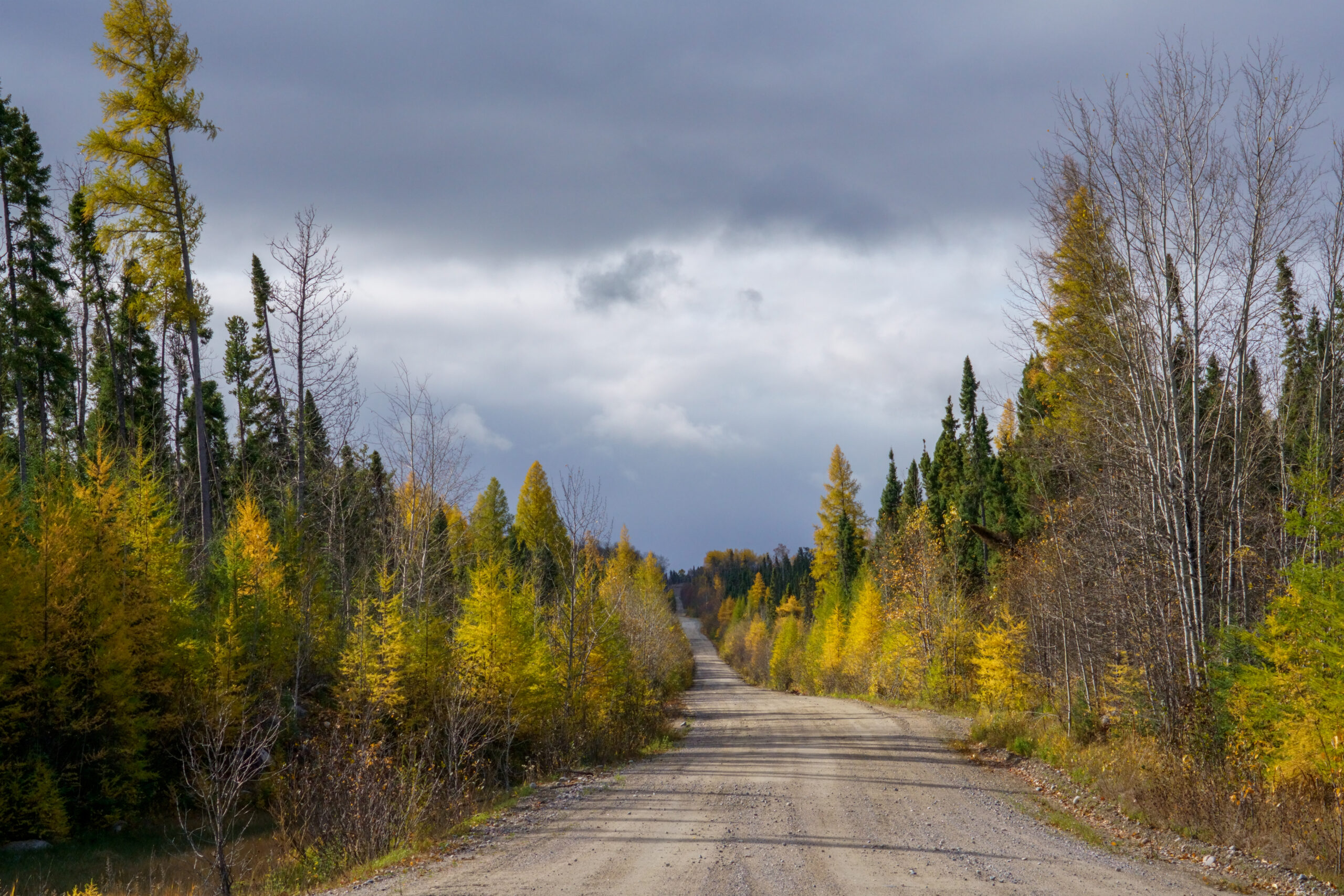
“We will do everything to stop any exploration or anything coming our way because we’re not ready for that,” Begg told reporters.
Alvin Fiddler, a former grand Chief of Nishnawbe Aski Nation who was there to speak on behalf of Muskrat Dam First Nation, said he is also alarmed about a flurry of mining claims being staked on the nation’s territory. He said he had come to Queen’s Park to remind the government that it does not have the authority to infringe on Indigenous Rights, which he said it has done over and over.
“If we allow industry and Ontario to continue to trample upon our rights, to trample upon our communities, things will get a lot worse in our communities,” Fiddler said.
“That’s why we’re here. To remind Ontario that we’re here, and you need to talk to us.”
Updated March 30, 2023, at 12:28 p.m.: This article was updated to correct that representatives of five First Nations were present, not four.
Get the inside scoop on The Narwhal’s environment and climate reporting by signing up for our free newsletter. On a warm September evening nearly 15...
Continue reading
From disappearing ice roads to reappearing buffalo, our stories explained the wonder and challenges of...

Sitting at the crossroads of journalism and code, we’ve found our perfect match: someone who...

The Protecting Ontario by Unleashing Our Economy Act exempts industry from provincial regulations — putting...
